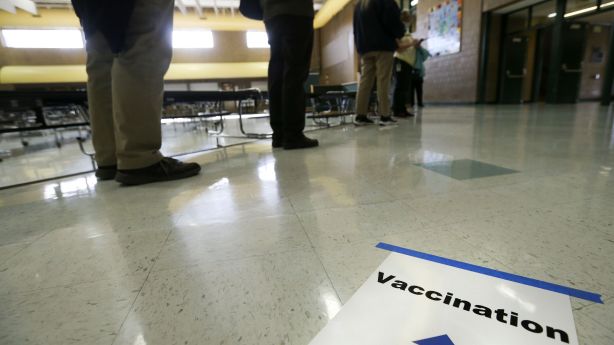
SALT LAKE CITY – Utah Health Department officials said Sunday that the agency intends to work with the Centers for Disease Control and Prevention in an effort to ensure it receives the “fair share” of the COVID-19 vaccine.
The Department of Health made the announcement in a series of “vaccine transparency” statements following a report from the Salt Lake Tribune on Saturday that Utah received fewer doses of COVID-19 per capita than others. state.
The department acknowledged that the vaccines were distributed to states based on the share of the adult population. Because Utah’s average age is the youngest in the country, the state was expected to receive fewer doses.
“We have no reason to believe that Utah is receiving fewer doses than it should be,” the agency said in part.
“We asked the CDC to make sure Utah gets a fair share of the vaccine,” he said. “They are not aware of any discrepancies, but they have agreed to revise their numbers for accuracy.”
Since the launch of the COVID-19 vaccine began in mid-December, most doses of the vaccine have reached the arms of medical professionals and emergency responders. It is also approved for residents of long-term care institutions, school teachers and the elderly. In Utah, anyone over the age of 70 is eligible for the vaccine. Some states have started vaccinating people over the age of 65.
People aged 70 or over made up only 6% of the state’s population at the time of the 2010 census; about 13% were people over the age of 60. More than three-quarters of the state’s population at the time was under 50.
While the Census Bureau has not yet finalized the 2020 census data, estimates in recent years would indicate that Utah is still leaning sharply toward a young population, including ages that are not yet eligible for the vaccine based on federal release guidelines. For example, it estimated that only 16% of the state’s 3.2 million residents in 2019 were people aged 65 and over.
CDC data updated Sunday night shows that South Carolina (8,803 per 100,000) was last in the distribution of the COVID-19 vaccine per capita in the United States, followed by Nevada (9,316 per 100,000). But the data shows all vaccine distributions since mid-December, including doses given to health workers, emergency responders and teachers, many of whom fall below 65-70 or higher. It also does not indicate how many were delivered specifically for long-term care units – something the federal government oversees.
Neither the CDC nor the state health department provides a breakdown of vaccines delivered or administered based on the groups that received the vaccine. The health department said on Sunday that it had briefly provided data on where the state’s vaccines had gone, but extracted the information “while we went through a data quality assurance process.” He expects to return to the department’s COVID-19 dashboard in the near future.
Meanwhile, Utah Governor Spencer Cox announced last week that the state will provide new data on the time between the arrival and administration of vaccine doses. The state on Thursday released a new data set showing the number of vaccine doses older than seven days that have not yet been used.
“No dose should be on the shelf for more than seven days,” Cox said during a press briefing. “My only focus was on the first doses, because the first doses determine the second dose, and every ability we have to get vaccines should focus on those first doses as soon as possible.”
The state reported 31,398 unused vaccine doses older than seven days that day. More than 80% of these have been set aside for federal pharmacy partners tasked with administering vaccines to long-term care facilities.
In its response Sunday, the Utah Department of Health updated the figure to 26,399 unused vaccine doses. Community health services and local health departments – those in charge of administering doses to emergency responders and residents – had consumed all allocated resources, while hospitals and clinics had consumed 96% of their resources, and federal partners the pharmacy had consumed 49%.

The health department said on Sunday that federal pharmacy partners had 28,010 total unused doses – 23,235 of which were set aside for first-dose doses. The department said pharmacies such as CVS and Walgreens are “doing an excellent job” of vaccinating long-term care staff and patients, but that the federal government has provided too many doses reserved for long-term care units than necessary.
“Some of these doses are probably available in preparation for future clinics this week. However, it appears that the federal government has allocated too much vaccine to these providers,” the health department said.
“We will ensure that Walgreens and CVS receive the doses they need to fulfill their obligations in long-term care units,” the department continues. “But any higher or higher dose needs to be transferred or redirected to other suppliers across the state who have the ability to carry them in their arms as soon as possible.”
Nearly 230,000 Utahns have already received the COVID-19 vaccine, according to an update made Monday by the state health department.
